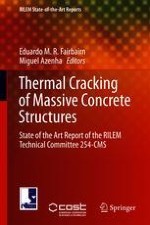2019 | Buch
Thermal Cracking of Massive Concrete Structures
State of the Art Report of the RILEM Technical Committee 254-CMS
herausgegeben von: Dr. Eduardo M.R. Fairbairn, Miguel Azenha
Verlag: Springer International Publishing
Buchreihe : RILEM State-of-the-Art Reports
